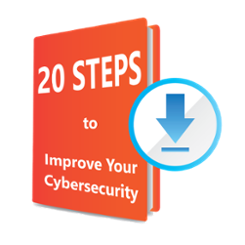Let's just assume for a minute that access to your place of business was blocked due to unforeseen circumstances. Ask yourself:
- Will your employees know what to do?
- Can you continue to operate the business without access to the building?
- Will customer calls be answered as usual, or will they go right to voicemail with no response from your employees?
Having a business continuity solution that addresses these and many more questions is essential to the continuing operation of your business.
Creating a Business Continuity Plan
So what is generally included in a business continuity plan?
1. Establishment of a solid line of communication with employees and customers
2. Contact information for essential employees, both home and cell numbers
3. Alternate methods for customers to contact you (most VoIP systems can forward calls to cell numbers)
4. Alternate methods for employees to access business systems, such as VPN access from home computers
5. Additional office space, including furniture and equipment if needed
6. Alternate power sources, if needed
7. Nearest data centers
8. Scheduled review dates of existing plans
Depending on the size of the company, the business continuity plan could be as short as a couple of pages while larger companies would generally have much larger, more comprehensive plans.
Business Continuity Plans vs. Disaster Recovery Plans
You might be asking...
What about repairing systems that become inaccessible?
 Instead of a business continuity plan, information about repairing systems is included in a disaster recovery plan.
Instead of a business continuity plan, information about repairing systems is included in a disaster recovery plan.
While business continuity and disaster recovery can be intertwined, they are in fact two different processes.
"Business continuity is more proactive and generally refers to the processes and procedures an organization must implement to ensure that mission-critical functions can continue during and after a disaster."
"Disaster recovery is more reactive and comprises specific steps an organization must take to resume operations following an incident."
(From TechTarget: https://searchdisasterrecovery.techtarget.com/definition/Business-Continuity-and-Disaster-Recovery-BCDR.)
To keep business continuity processes and disaster recovery processes well organized, it can be beneficial to write two separate plans. Then later, if it makes sense, these plans can be combined into one document.
Protect Your Business from Disasters
You can protect your business from disasters by using Corserva's disaster recovery services. We customize a program for you to meet your specific needs, and manage that program on a daily basis to ensure effective execution and preparedness for data loss and disaster recovery situations.
Corserva owns two HIPAA and PCI compliant data centers in Orlando, Florida and Trumbull, Connecticut. From these locations, we provide business continuity, colocation, private cloud, network operations, user support, and security operations services. Our data centers are SSAE 18 SOC 2 Type II compliant.
Request a quote for our backup & disaster recovery plans.


